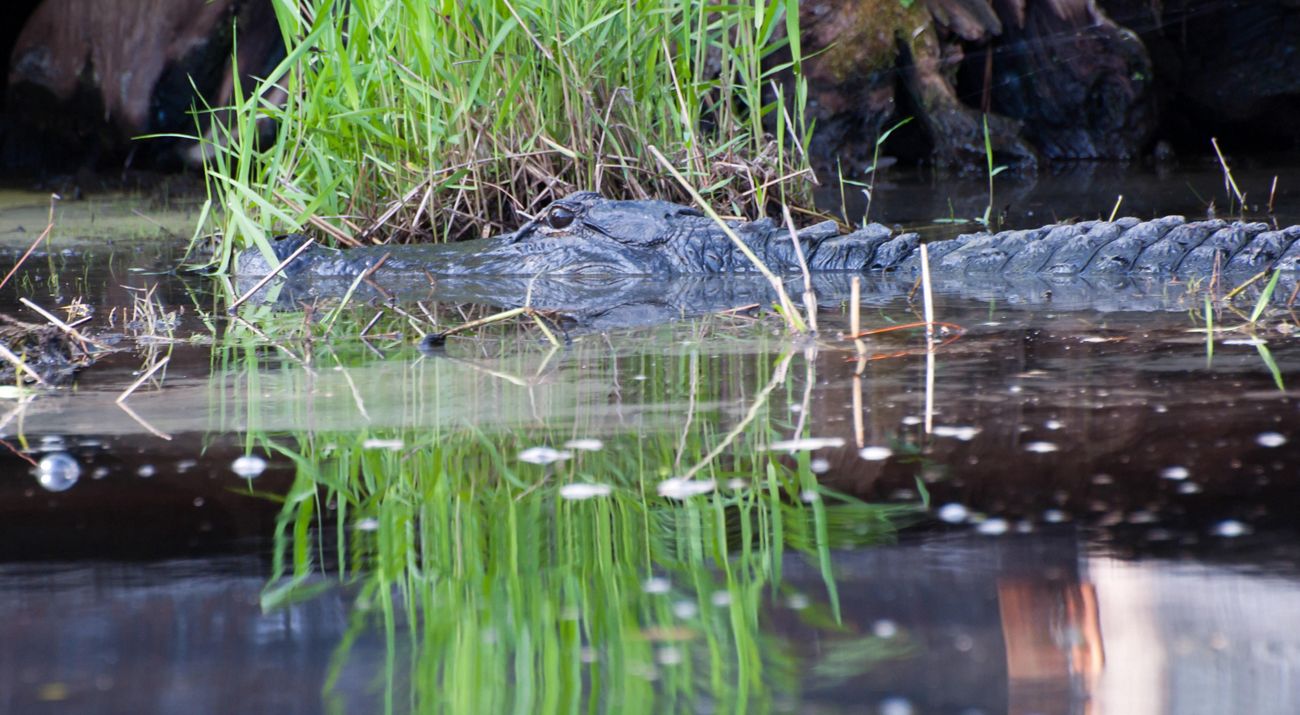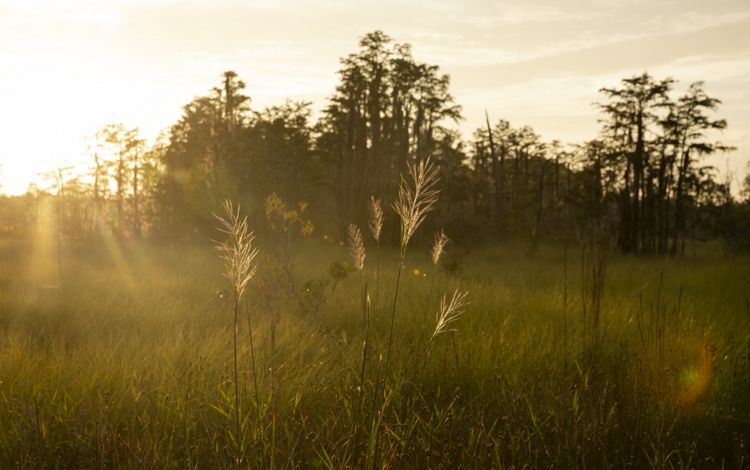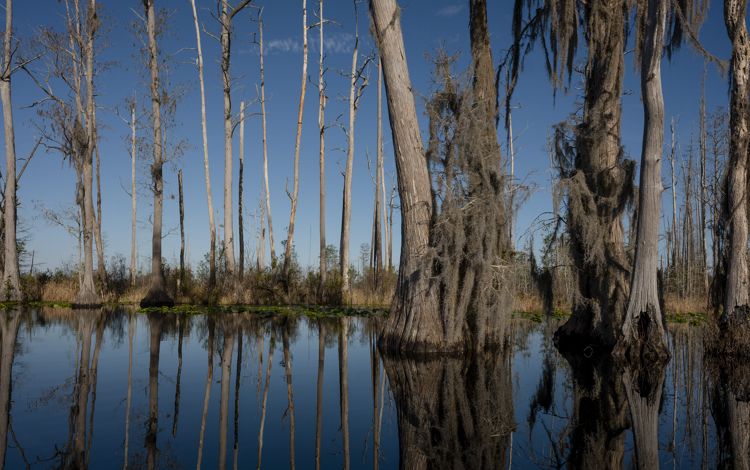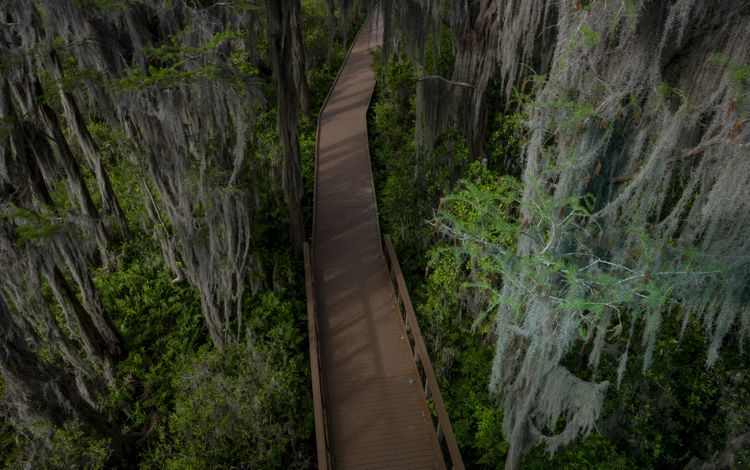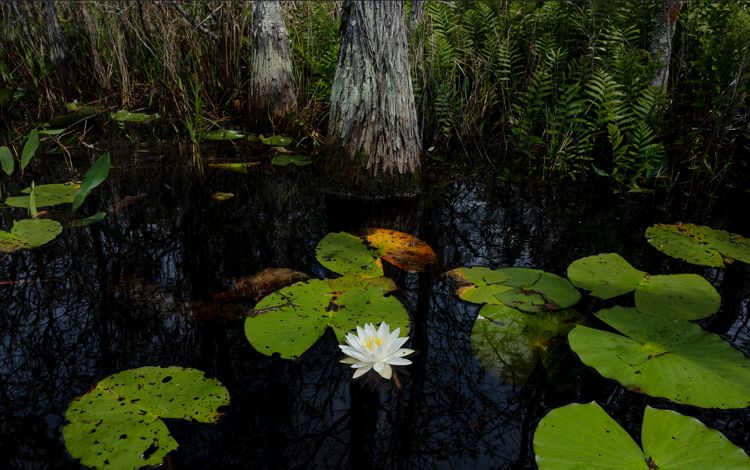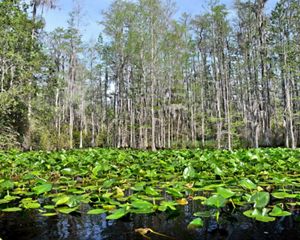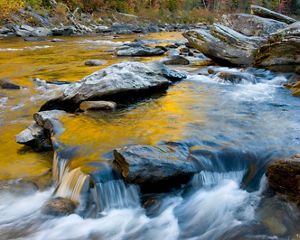Description
Few areas can match the variety and sheer abundance of wildlife in the Okefenokee. Located in the southeast corner of Georgia, the Okefenokee Swamp spans around 700 square miles and is the largest swamp in North America. The swamp includes a wide range of habitats, including wet and dry prairies, cypress swamps, winding waterways and forested uplands.
American alligators patrol the waters, and the land is also home to the endangered eastern indigo snake, among 60 other reptile species. In fact, these diverse habitats support a staggering number of species, including more than 400 vertebrates. Wading birds like blue herons, wood storks and white ibis frequent the swamps, as do more than 200 other types of bird. The swamp also contains the headwaters of two rivers: the Suwannee and the St. Mary’s rivers.
